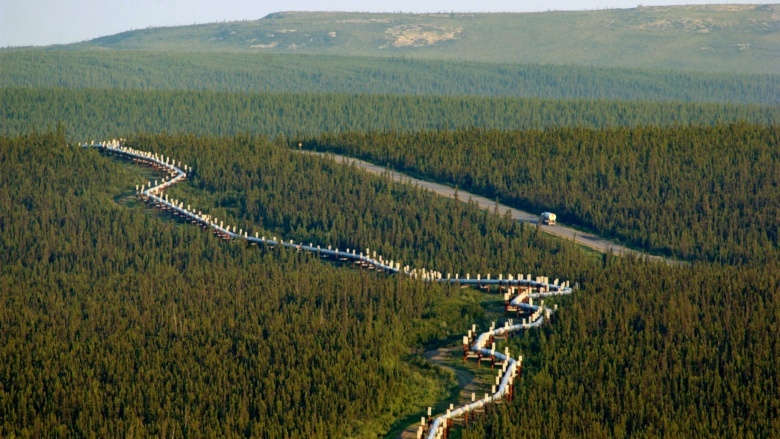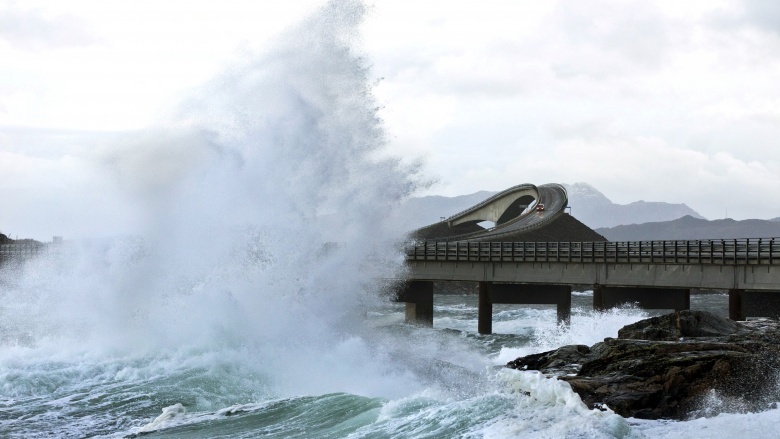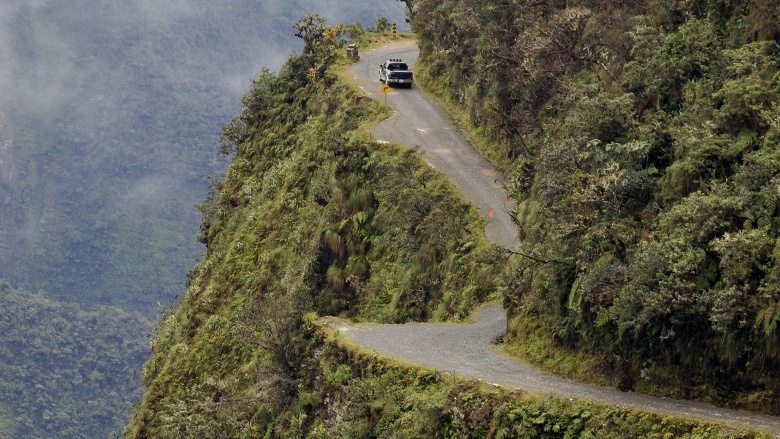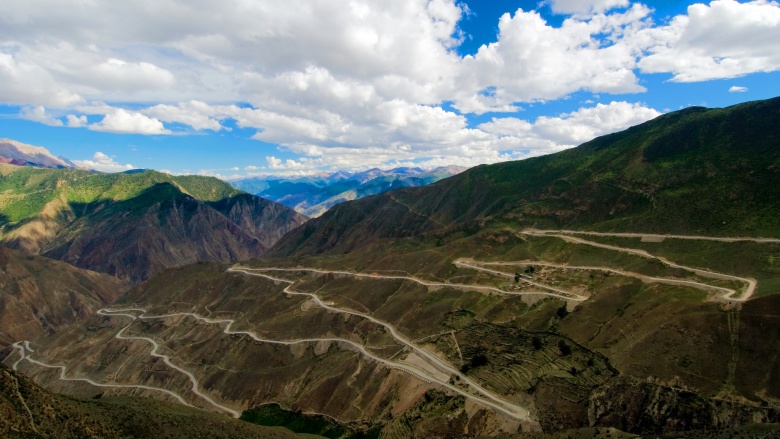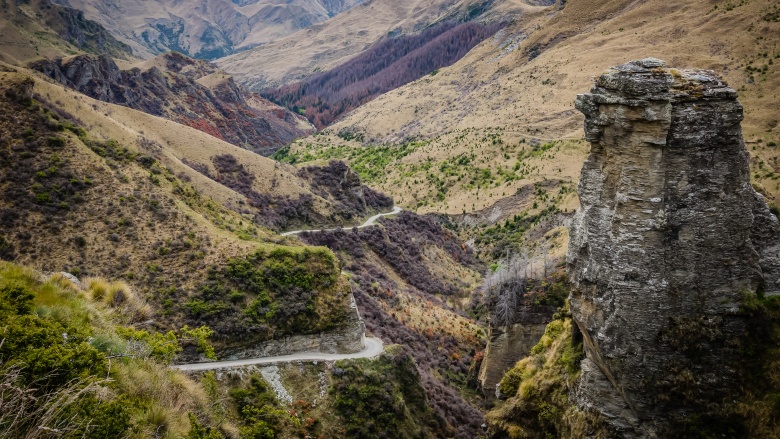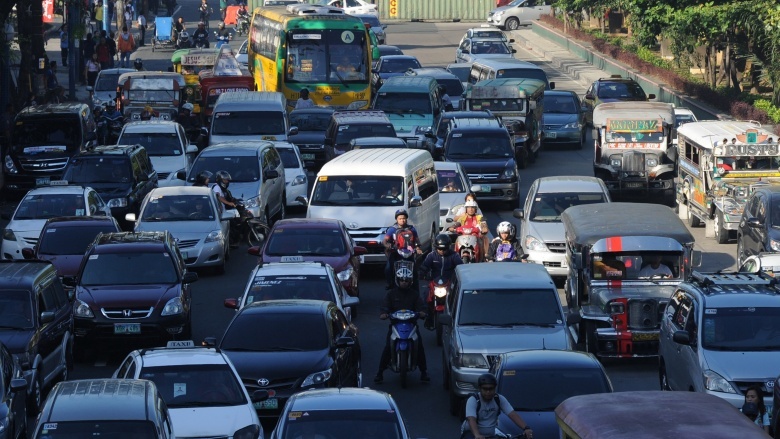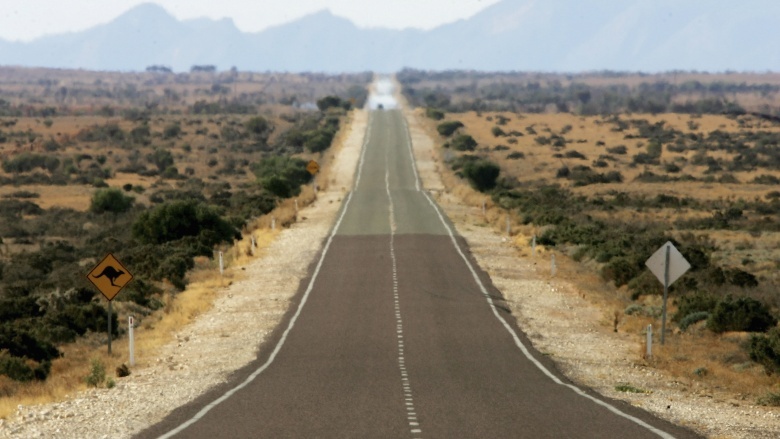The Most Dangerous Places To Drive In The World
Driving can be dangerous, and every one of us who attempt to control those speeding steel boxes of ours will, at some time or another, experience a life-threatening situation. But the truth is, despite the occasional error of judgement or climate, driving in the US is largely safe, and you will most likely get to your destination calm and in one piece (or just in one piece, because traffic, right?). But just because you don't experience those kinds of dangerous roads regularly doesn't mean they don't exist. As you will see, driving styles, laws, and road conditions vary so much, that what might be an everyday commute for a native of Afghanistan would be a death-defying (or outright death-inviting) thrill ride for a driver in the Land of the Free. Here are some of the most dangerous roads in the world.
Dalton Highway, aka the "Haul Road," Alaska
Despite the relative safety of most American roads, there will always be an exception—in this case, the James Dalton Highway in Alaska. Running 414 miles from just north of Fairbanks, to Deadhorse (just short of the Arctic ocean), this stretch of flattened terrain has a hundred ways to punish the unprepared driver. We're not talking a "spare tire and a packed lunch" kind of preparation, either, but rather the "emergency survival kit and satellite phone" kind of preparation. That's because on the whole 414-mile length (including 305 unpaved miles), there are only three towns—including Deadhorse right at the end—and there's no cell phone coverage. Official advice from the Bureau of Land Management in the event of a medical emergency while traveling on the road, is to flag down a passing truck. If you ever find one.
Atlantic Ocean Road, Norway
Unlike the Dalton highway, the Atlantic Ocean Road in Norway is not, in itself, inherently dangerous. It's well-built, well-maintained, and at just over five miles, it's not long enough for unfortunate motorists to find themselves in need of emergency rations. In fact, because of its unique situation, it's actually a major tourist attraction.
The problem with this road is that it was built across a series of small islands to connect remote communities, and while that has the benefit of exposing drivers to beautiful scenery, it also exposes them to the full fury of the Norwegian Sea. During construction of the road between 1983 and 1989, the area was hit by twelve hurricanes. And with the road running close to sea level along most of the route, it is common for the road to be inundated with water in bad weather, leaving drivers at risk of aquaplaning, poor visibility, or simply being swept out to sea.
North Yungas Road, Bolivia
Also known as Death Road, the North Yungas Road is often touted as the most dangerous road in the world. Built in the 1930s by prisoners of war who hacked a flat path into the side of a mountain, most of it is still unpaved and lacks guard rails. To add to the excitement, most of the road is only wide enough for a single vehicle to negotiate. To enable drivers to more safely navigate the treacherous route, the usual rule about driving on the right is flipped on its head. This allows the driver of the outside vehicle a better view of the terrifying drop-offs—of up to 2000 feet—just inches away from their front wheel, and a better chance of avoiding a rapidly approaching view of the bottom.
Wet weather in the winter seasons brings the possibility of mudslides and rockfalls, not to mention random waterfalls spilling over the road and turning the surface to mud. 200-300 people are killed on this road every year, but that hasn't stopped it from becoming a popular route for thrill-seeking downhill mountain bikers, who are drawn by a nearly continuous 40-mile downhill stretch. One man's deadly commute, as they say, is another man's holiday.
Luxor-al-Hurghada Road, Egypt
Luxor and Hurghada are two popular tourist resorts in Egypt, and they're connected by the 299-mile-long Luxor-al-Hurghada Road. You might think that a road connecting two tourist cities would be nothing to worry about, but you would be wrong. Apart from a complete lack of facilities like gas stations and hotels, local terrorist sects also haunt the landscape around the highway, and the risk of robberies and kidnappings is high. In response to this, the road is regularly patrolled by police and security agents, and tourists are advised to drive the route in convoy with armed guards.
Unfortunately, the risk of criminal interference has impacted what should otherwise be a relatively safe road, from a driving perspective. In order to avoid trouble, locals drivers will often travel at high speeds, which is bad enough, but at night they'll often avoid using their lights as well. And, since the Luxor-al-Hurghada Road is unlit, and Egyptians aren't known for any night vision superpowers, that means bad collisions.
Sichuan-Tibet Highway, China
The Sichuan-Tibet Highway was opened in 1954 and connects southwest China with Tibet. The road is largely unsurfaced, and traverses several mountain passes on it's way from A to B, which gives rise to a number of problems for the casual traveller, including getting frequently stuck in the mud, getting into fights with other drivers in the traffic jams behind cars stuck in the mud, and getting altitude sickness from being 5000 meters (three miles) high, which is much further away from sea level than most oxygen can be bothered to climb.
The road extends for over 2140 kilometers (1330 miles) and in order to climb the numerous mountains in its path, has resorted to innumerable hairpins and switchbacks, which combined with steep slopes and bad weather, results in frequent mud slides that can sweep vehicles into oblivion. Plus, it totally looks like a tapeworm when viewed from up high, making it both dangerous and disgusting.
Should you decide to brave the route, and assuming you are well prepared, you will be rewarded with unsurpassed mountain vistas and a tourist experience that leaves all others in the shadows...or despite your best laid plans, you could still just get stuck in the mud for days with a splitting headache from lack of oxygen.
Skippers Canyon Road, New Zealand
Not all dangerous roads are off the beaten track (even if they're barely more than a beaten track), and proof of this is Skippers Canyon Road in New Zealand. Not even 30 minutes drive outside Queenstown on the South Island, Skippers Canyon road features a narrow, often single-lane, unpaved road that meanders its way through some very steep and undoubtedly beautiful landscapes. Stare too long at the beauty, however, and you might find yourself being buried there.
Steep cliffs, no barriers, and distracting beauty ought to be a recipe for disaster, and that would absolutely be true elsewhere, but fatalities on Skippers Canyon Road are actually shockingly infrequent. This might have something to do with how you need a special permit to drive on it, meaning most people on the road have done it before, and know what they are getting themselves (and their often fee-paying passengers, as most drivers on this road are professional tour guides) into. Also, they've seen the beauty already, and are therefore able to keep their eyes and minds on the business of avoiding a rapidly approaching view of the canyon floor.
Fairy Meadows Road, Pakistan
Fairy Meadows Road wins prizes for the most inappropriately picturesque name for a deadly road, and also the most misleading. That's because, although you can start your journey up this nearly 10-mile route in a robust four-wheel drive vehicle, it gets so narrow that by the end, even a vehicle can't get through and you must finish the journey on foot.
Fairy Meadows Road is the approach route for anyone planning to climb Nanga Parbat, Pakistan's second-highest mountain, so at least most of the travellers won't be fazed by the height, or even the hike. But even so, the barely maintained road tiptoeing above treacherous drop-offs, with no guardrails whatsoever, must have even the most experienced mountain climber doing a few unplanned butt-clenching exercises. And what's more, it's technically a private road, meaning there are tollbooths. People pay to almost die on this road! Hardly the thrill-a-minute most of us would want to fork over money for.
Commonwealth Avenue, Philippines
A multi-lane highway running through the heart of Quezon City in the Philippines, Commonwealth Avenue is the most normal road on this list ... or so it looks. However, lacking any streetlights, useful signage, and any respect for speed limits by some users, the six to eighteen lanes on this seven-mile stretch of road are often jammed and regularly see three to five accidents a day, according to Police Chief Superintendent Arnold Santiago.
Driving on this road is less a quick way to get from A to B, and more an education in defensive driving, thanks to random and unsignalled lane changes common, as well as sudden slow downs, and even city buses coming to a complete stop to pick up and drop off passengers. It pays to pay attention on this road, because the price for getting distracted could be a lot worse than some dinged fender.
A44, England
High mountains and gravel roads aren't the only way to create a dangerous road, and like Skippers Canyon Road in New Zealand, England's A44 is far from remote. In fact, the A44 is a relatively well-maintained, well-travelled road in the middle of a developed western nation. However, it's also frequently narrow, winding, and covered in fog.
Starting in Oxford, and running west to Aberystwyth in Wales, the A44 is a major route for all kinds of traffic, including daily commuters, truckers, boy racers, farm vehicles, and everything in between. Speeds vary from 30-70 MPH, and while some sections have extra lanes for passing, most of it's almost perfectly designed to create tailbacks. This leads to impatient drivers taking risks, attempting dangerous passes, or simply driving too fast which, when combined with the not infrequent bad weather and fog, results in frequent (as in, near-daily) accidents. At least there are no armed bandits ... just the unarmed, fast-motorcycle kind.
Eyre Highway, Australia
Commonly referred to as "Slaughter Alley," Eyre Highway presents its travelers with a unique threat. Running for 1,030 miles between Western and South Australia, Eyre presents very little in the way of traditional driving threats. Congestion is low, the surface is generally in good condition, there are few wild twists and turns, and there's little in the way of rainfall to create slippery conditions.
But see, that's the problem on this dangerous road, because driving along Eyre Highway is boring. Passing through mostly flat agricultural land, and with little traffic, there's little to entertain the eye or occupy the mind. At one section in Western Australia. The road continues for a full 90 miles without any turns at all, making it one of the longest, straightest sections of road in the world. This means that, after mindlessly driving for several hours along this featureless road, when a kangaroo jumps in front of your car, or perhaps a road train passes you in the other direction and you're hit with the massive wind blast, your grey matter is so congealed from boredom, you'll be lucky to react at all.
